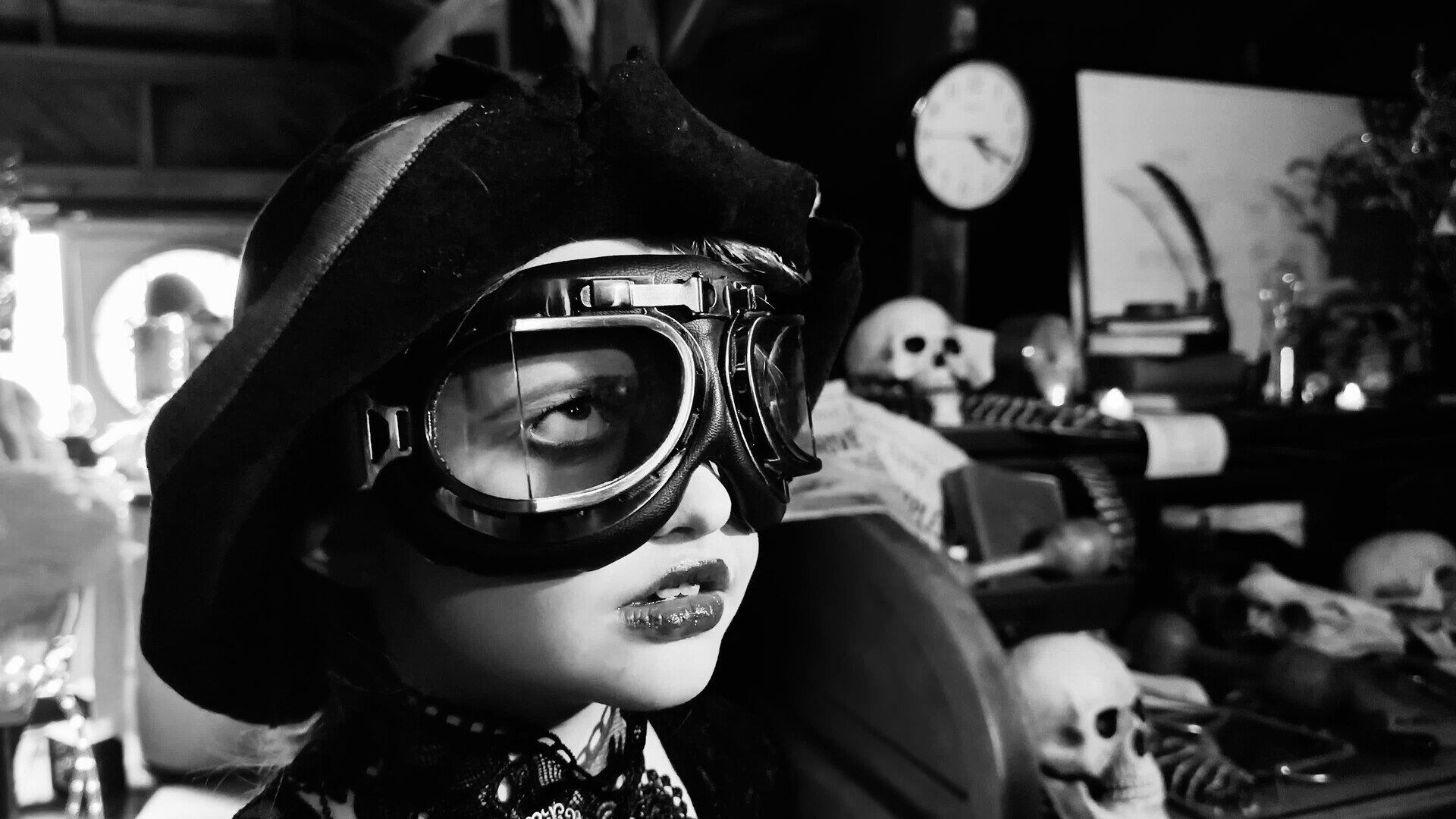Ever since Randy Sean Schulman moved to Sellwood from Los Angeles 13 years ago, he’s wanted to shoot a silent movie in the Portland enclave.
“It just felt like a little village,” Schulman says, citing Sellwood’s Oaks Park, Oaks Pioneer Church, Sellwood Community House, and abundant train tracks as ideal for invoking the early 20th century era of film.
All those locations sustain the aesthetic illusion of The Masked Villain of Sellwood, the new silent film written and directed by Schulman. The 35-minute short rifles through references and genres: It’s a black-and-white, lightly surrealist, sci-fi, meta character study about a teenager in a plague mask (the titular villain) who kidnaps a bride on her wedding day. In turn, an Our Gang-esque gaggle of street urchins seeks to rescue The Bride (Raz Mostaghimi)—and maybe The Villain (Sam Santner) in the process.
The film’s community roots extend far deeper than the Sellwood train tracks on which its action unfolds. It’s a production from Rogue Pack, a local nonprofit that serves at-risk youth and operates a nonprofit theater school.
While the at-risk youth on “The Pack” side of Rogue Pack couldn’t appear in the film for legal reasons, stories like theirs directly inspired Masked Villain. Schulman and Ann Singer, Rogue Pack’s founder and executive director, solicited more than 20 poems and short stories from Oregon Youth Authority teens in custody. Excerpts of their writing can be heard at the end of the film, and their works sparked Schulman to invent a phantom villain whose trauma and abandonment have overtaken his self-concept.
Schulman himself, a veteran actor from Wild, Grimm and the forthcoming Portland-made film Cellar Door (starring Laurence Fishburne), appears onscreen as the agent of the film’s flexible fatalism. He plays a tramp-styled writer—bowler hat, eyeliner—tapping out the story we’re witnessing on a typewriter, while benevolent child gang leader The Daughter (Lucy Lee Lamb) lobbies him for a happier ending.
“This [film] is really about speaking to the storyteller inside each of us,” Schulman says. “It’s only when you confront that storyteller that you can accept your history and not be weighed down by darkness.”
Those are familiar themes to Simon Fulford, one of the film’s cinematographers and the executive director of Oregon City’s Parrott Creek Child and Family Services. During pre-production, Fulford wondered aloud to his friend Schulman how the writer-director would tell a story of at-risk youth that didn’t rehash old representations.
“We have enough realism out there,” Fulford remembers saying. “How is your voice going to be different but still address the trauma these kids have experienced?”
The answer was to do something that abstracted but honored the experiences of struggling Oregon youth, kids who’ve told advocates like Fulford that they’ve felt “like monsters.”
“It was a very different experience from who I am,” says 15-year-old Sam Santner (the Masked Villain), “but I think it’s important that we tell those stories.”
While the century-old cinema aesthetics in Masked Villain are modernized by pumping beats, acrobatic drone shots, and music video-style editing, Portland artists like Zoë Della Rocca helped give the film a distinctive look. Inspired by silent film luminaries like Clara Bow and Mary Pickford, Della Roca oversaw the styling and application of the kids’ grubby eye makeup (fittingly sold in a giant makeup pot labeled “Dirt”).
“[In black-and-white], the makeup has to be that much more impactful for it to show up on screen,” Della Rocca says.
Amid their technical ambition, the adult craftspeople constantly reminded themselves their cast was largely under the age of 16. “How dare they stop and eat something and spoil my lipstick!?” Della Roca jokes.
One of Masked Villain’s most prevalent visual motifs is the Our Gang-type troupe sprinting back and forth along a half-mile of south Sellwood train track, which they did countless times from January through June 2023 as production unfolded on weekends.
Nine-year-old Lucy Lee Lamb remains split on her favorite part of the onset experience: It was either eating her dad’s pesto pasta during breaks or acting the scene where she yanks on the lapels of The Writer (aka her director), insisting he course-correct this kidnapping tragedy.
The latter demonstrates the tenacity Lamb admired most in her character. “She didn’t stop,” Lamb says. “She was really, really determined.”
After premiering Masked Villain at a sold-out Moreland Theater in September, Schulman is in the process of submitting to festivals, hoping the film’s unique production and cast could be a draw.
Meanwhile, Santner and Lamb are eager to act more—Santner onstage and Lamb in another silent movie, ideally. The 9-year-old says she doesn’t like the sound of her recorded voice. She loves Singin’ in the Rain, though, so talkies could be in her future. If Masked Villain tells us anything, the off-screen ending of this Sellwood saga is still free to be written.
SEE IT: The Masked Villain of Sellwood plays at Sellwood Community House, 1436 SE Spokane St., 503-894-9496, sellwoodcommunityhouse.org. 6 pm Saturday, Nov. 11. $5.
